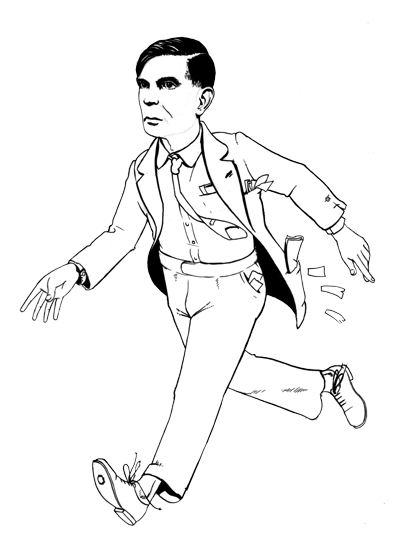Been reading The Design of Everyday Things by Donald A Norman. Its pretty good and although its reasonably old now it has some good ideas.
“Well-designed objects are are easy to interpret and understand. They contain visible clues to their operation.”
He talks about design as a functional thing and gives examples that everyone can understand everyday objects, doors, car controls etc. He does have a hang-up on telephone systems but the lessons learned are valid.
Mappings
He talks about mappings a lot. The idea being that controls map/translate to the actions they produce. An example of a intuitive natural mapping he gives is a steering wheel turning the control (wheel) to the right moves the mechanism to the right. When the control doesn’t map well to the action it creates confusion. An example he gives is the forward and backward controls on his cars speakers the action you want is to move the volume from the front speakers to the rear speakers but he cites the control that effects this action moving from left to right. So it actually maps front to left and rear to right which introduces an additional layer of confusion. Although left to right works fine its different from the users conceptual model and a bit arbitrary.
Feedback
Feedback is also a key subject, giving you plenty of clues that your doing the right or wrong thing when controlling something helps create a greater understanding and aids quicker learning. I was thinking about this and I know I find it confounding when I use really slow computers you click nothing happens you click again and still nothing happens. Eventually the thing you wanted to happen once happens thrice. In the meantime your thoroughly confused about what the state of the thing your changing currently is.
So as much as you can, make system state visible, is the hob on the oven on?. Make it obvious if it is on or off.
He also touches on faith in the controls. Make sure that the feedback is correct, if it isn’t just few times it can lead to that warning light being ignored the one time it is correct and action is needed.
Feedback is a great way to make the invisible parts of the system visible to the user. Which should help them in there understanding.
Errors should be as cost free as possible
When people make errors in controlling it should be reasonably easy to reverse out of them. Good feedback can help users diagnose what has happened and what they could do to resolve/learn. People make guesses at the cause of errors from the info available to them. The job of the feedback and design is to make that map to the real cause. Though clear controls and obvious design you can help make the users mental model of how an object works in the parts they can’t see accurate.
Keep it simple
Overly complex feedback obscures faults and provides a plethora of signals that can be misinterpreted. He gives examples of nuclear power plants and jumbo jets that have so many controls that they can end up being misinterpreted. Simplify or clarify the options, excessive options or and features increase the complexity for the user greatly. People blame themselves for misunderstandings so its important to dig for issues or the designer may never become aware of them.
Constraints Cultural
Conventions and learned behavior, are brought with each user when they come to learn a new tool. This means its often easier to evolve from the systems they already know. If your designing a new phone you could rethink absolutely every element and if everyone else came to your new phone with no knowledge of previous phones that might work but that is not how the world is. You can also use standards even if they seem odd if they are what people are used they can apply that learned knowledge to your new thing.
Constraints Physical
If you design your thing to be only be used in one direction say that is a physical constraint and means the user can cut down the options they might guess at considerably. The pattern of use can be learned more easily.
He goes on to say a lot more about how to memory works, short term memory and long term memory. Rhyming, patterns and stories as ways of remembering learning.
About the structure of memory long term memory and short term memory and what you store in each. Something like 5- 7 items being the limit for short term memory so longer numbers might be an issue.
All in all lots of info and plenty worth reading even if some of the examples are a bit old. At one point he describes the smart phone way before they were available:)

 Was reading ‘
Was reading ‘
